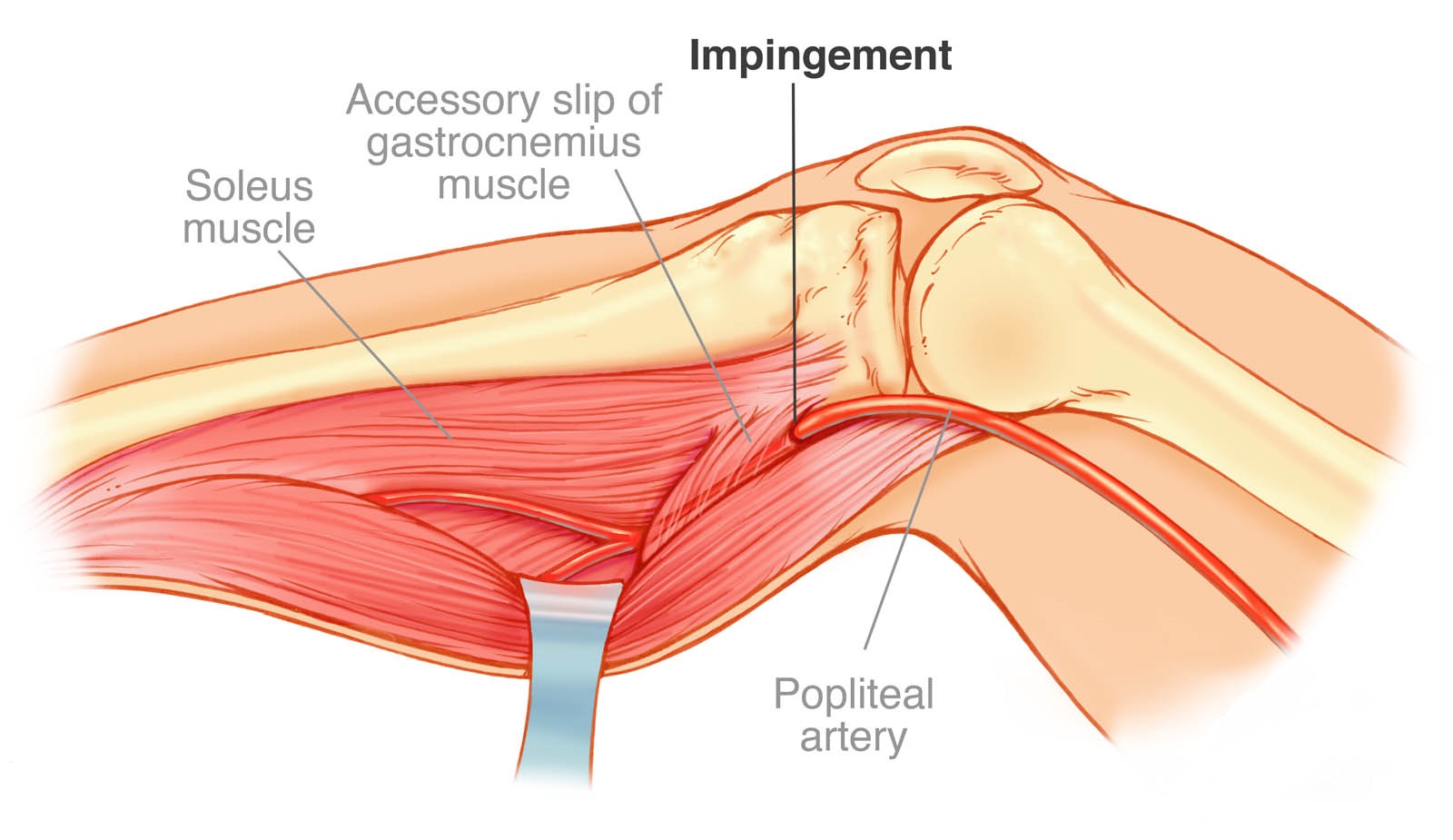A Novel Approach To The Treatment Of Popliteal Artery Entrapment Syndrome In College Athletes
Muhammad A Munir, Muhammad Faateh, Ying Wei Lum, Caitlin Hicks, Christopher J Abularrage, James H Black
The Johns Hopkins University, Baltimore, MD
INTRODUCTION: Functional popliteal artery entrapment syndrome (FPAES) is a rare disorder that results from hypertrophy and overuse injury of calf muscles, which in turn compress neurovascular structures in the popliteal fossa. A majority of FPAES cases involve young athletes, who present with symptoms during exercise. Most commonly, FPAES is surgically treated with muscle debulking utilizing a posterior S-shaped incision. Here we present our case series of college athletes undergoing FPAES repair utilizing a novel medial incision approach.METHODS: This is a retrospective analysis of all FPAES repairs performed from 2016-2019. The popliteal fossa was entered by a 10-12 cm incision on the medial aspect of the calf and mobilization and lysis of popliteal artery, vein and neurovascular bundle was performed. Tenotomy of the soleus and tenotomy and debulking of the medial gastrocnemius was performed. Figure-1 shows exposure of structures as seen by medical approach. We studied postoperative wound complications, pain, neurovascular symptoms during in-hospital and long-term follow-up periods, length of stay and pre and post-op ankle brachial indices (ABI).RESULTS: 15 patients were included, all of whom underwent bilateral repair (30 limbs). The mean age was 21.8 years (SD +/-6.8). Most patients were female (86.7%), presented with pain (100%) and had a reduction in ABI after exercise (Mean resting ABI: 1.20, mean post-exercise ABI: 0.96). The median length of stay was 1 day (IQR 1-2). Median follow-up was 57.5 days (IQR 41-250). The post-operative ABI after exercise showed marked improvement in all athletes. (Mean Resting ABI: 1.20, mean post-exercise ABI: 1.10). On the long term, follow-up 12/14 patients had an eventual return to their same level of competition. Detailed characteristics and outcomes are shown in Table-1.
CONCLUSIONS: We demonstrate favorable results and a low rate of complications for release of FPAES utilizing the medial approach. Our surgical approach avoids the wound complications of infection and neuropathy inherent to the posterior approach and may provide comparable hemodynamic outcomes for patients with FPAES.
Figure-1 Exposure of structures of popliteal fossa through medial based approach.
Table 1. Pre-op Characteristics and outcomes of patients undergoing FPAES repair utilizing medical approach.
| n = 15 Patients | Percentage | |
| Pre-operative Characteristics | ||
| Pre-operative symptoms-Paresthesia-Pain-Limb discoloration-Limb swelling | 21511 | 13.31006.76.7 |
| Prior surgery of limb | 7 (13 limbs) | 43.3 |
| Type of Sports-Soccer-Gymnastics-Triathlete/Runner/Swimmer-Other athletics | 9141 | 60.06.726.76.7 |
| Pre-op ABI (Resting) mean, SD | 1.20 (±0.07) | - |
| Pre-op ABI (Post-Exercise), mean, SD | 0.96 (±0.16) | - |
| Outcomes | ||
| Post-op ABI (Resting)mean, SD | 1.20 (±0.08)Based on 26/30 limbs | - |
| Post-op ABI (Post-Exercise), mean, SD | 1.10 (±0.18)Based on 21/30 limbs | - |
| Length of Stay, Days (Median, IQR) | 1 (1-2) | - |
| Complications on Follow-up -Pain-Paresthesia-Wound Complication-Return to sports | 33012(Based on 14/15 patients) | 20.020.00.085.7 |
Back to 2021 Abstracts

